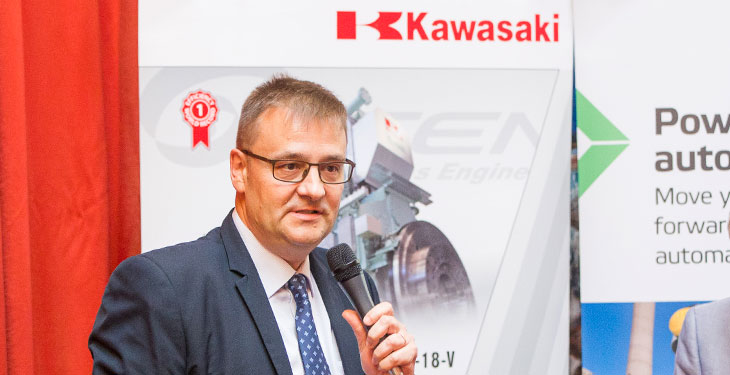The Ministry of European Funds extended again the term for the co-financing of cogeneration plants, and there are no projects registered in the program so far, Cristian Athanasovici, Business Development Manager, Kawasaki Gas Turbine Europe stated at Energy Breakfast Club: Cogeneration – industry, households and the national energy system, an event organized by energynomics.ro.
“We have, together with many other companies, deployed a strong lobby to the Ministry of European Funds in respect with Axis 6.4 of POIM (of large infrastructure projects) to accept a new delay for the submission of projects, and a new deadline was now admitted – December 31, 2019 – as the last one. Unfortunately, up to date, the Romanian industry, which could benefit from such funds, did not file projects. Even under the limitations imposed by the European Union, there is a potential market for under 8 MWe projects. Unfortunately, the industry is either not sufficiently informed, or, to say it plainly, is not interested. They do not want to try to submit projects. At the moment, a single project is signed, worth more than 5 million euros, and the total funds available are over 65 million euros worth,” Athanasovici said.
“When the cogeneration bonus ceased to exist, there were almost no projects… Our market potential decreases every day,” added Șerban Ţigănaş, member of TEB’s board of directors.
“Electricity and thermal energy were treated a bit separated in Romanian politics and strategy. This has happened in a country that had the necessary elements to represent a model in Europe,” commented Carmen Neagu, Strategy & Business Development Counselor, EnergoBit.
At the same time, the market is waiting for the amendments to the cogeneration Law 325, and co-generation subsidies law to be completed.
“There have been many drafts… We are waiting to see the final form. This is one thing that will give confidence to investors for cogeneration solutions… I hope the new formula of the bonus will aim at investing rather than simply covering operating costs,” Athanasovici said.
The Large Infrastructure Operational Program (POIM) was developed to meet Romania’s development needs identified in the 2014-2020 Partnership Agreement and in line with the Joint Strategic Framework and the European Commission’s Position Paper.
Axis 6.4 provides for savings in primary energy consumption generated by high-efficiency cogeneration through the following actions: elaboration or modernization of high-efficiency cogeneration power plants (maximum 8 MWe and 20 MW fuel consumption) on natural gas and biomass at the level of enterprises and cogeneration power plants with high-efficiency waste- gas from industrial processes at the enterprise level.

